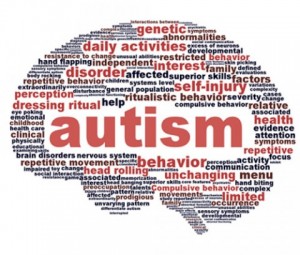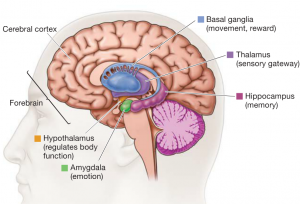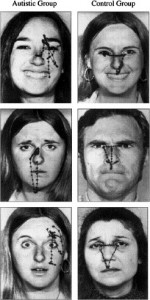Autism is a complex neurobehavioral disorder that includes impairments in social interaction and developmental language and communication skills combined with rigid, repetitive behaviors. (Web MD)
Autism has come to the forefront of neurological research in the past ten or so years due to the disease’s pervasive prevalence (estimated at 1 in 68 US Births, CDC 2014). Many in the scientific, educational, and developmental experts have deemed this an “autism epidemic”. While the cause of the sudden increase in diagnosed cases is heavily disputed (Web MD), there is little dispute over the effect it has on the diagnosed.
Autism: What causes it?
Scientists generally agree that the cause of autism is a “perfect storm” that occurs in the brain consisting of genetic and environmental factors. Since the disorder most commonly manifests in social deficits, scientists have directed their efforts to understanding why these occur. When peeling back the layers of research two reasons seem to be clear 1) a problem in the reward and motivational values of social stimuli and 2) visual perceptual impairments (Behrmann, Thomas, Humphreys, 2006). In fact recently, scientists have argued that these theories are not mutually exclusive, there is a brain deficits serve as a predictor of social deficits. Research by Aoki, Cortese & Tansella shows that face memory in children with and without autism predicts their ability to engage in developmentally appropriate social interactions. When impairment in facial memory is present in children with autism, effects are observed in “…reduced ‘real world’ interactions and more self-play” (2006). Typically developing children, without such deficits and higher performance in facial memory, tend to participate in more cooperative play. These results highlight the connection between brain and behavior, there is a clear connection between face memory and reciprocal social interactions (cooperative play)(Corbett et al., 2015). Based on this research, it suggests that improvement in one area may lead to improved outcomes in another. So basically…
Unlike some scientists have suggested, the manifestation of autism’s emotional and social deficits seems to originate in specific areas of the brain the result in behavioral differences. These areas are the subcortical structures, such as amygdala, hypothalamus and basal ganglia. Abnormalities in these structures are associated with the atypical emotional-face processing in individuals with ASD (Aoki, Cortese, Tansella, 2015).
The Joining of Two Theories: Brain and Behavioral
Twin studies tend to be the gold standard of scientific research as it discounts difference outcomes due to genetic differences. Much research on autism is conducted in twin studies. The Yale Child Study Center, a premiere institution for early-childhood autism research, has published many studies concerning the differences in face recognition amongst children with ASD. Their findings conclude that children with autism see faces differently than most people even at early ages. Typically developing infants are fascinated with faces and will consistently turn to them over simple objects. Children with autism however don’t tend to be as infatuated with faces as their typically developing peers. Many tend to not look ay faces and when they do, do not direct their eye contact towards the center of the face. They tend to focus on the chin, neck, or mouth. By not looking at the center of the face,where most facial and emotion recognition occurs, children with autism perform poorly on facial and emotional recognition tasks. For more information on this topic, Boston Children’s hospital has extensive resources on the Autism Infant Sibling Study.
Essentially, children with autism view faces very different than you or I. Eye tracking studies expand on what Dr. Nelson explains in the video above, children with autism focus on different parts of faces (not the eyes) that may contribute to their deficits in social interactions and the inability to read emotion (Golarai, Grill-Specter, Reiss, 2006). The eye tracking evidence suggests what Dr. Nelson asserted, children with autism tend to not focus on the eyes; a key definer of emotion. Several interventions by top research institutions, like University of Victoria, are attempting to help children with autism recognize faces despite their deficits in facial recognition.
References:
Aoki, Y., Cortese, S., & Tansella, M. (2014). Neural bases of atypical emotional face processing in autism: A meta-analysis of fMRI studies. The World Journal of Biological Psychiatry,16(5), 291-300.
Behrmann, M., Thomas, C., & Humphreys, K. (2006). Seeing it differently: Visual processing in autism. Trends in Cognitive Sciences, 258-264. doi:doi:10.1016/j.tics.2006.05.001
Corbett et al.: Examining the relationship between face processing and social interaction behavior in children with and without autism spectrum disorder. Journal of Neurodevelopmental Disorders 2014 6:35.
Data & Statistics. (2015, August 12). Retrieved September 25, 2015.
Feature, K. (n.d.). Autism: Cases on the Rise; Reason for Increase a Mystery. Retrieved September 25, 2015.
Golarai, G., Grill-Spector, K., & Reiss, A. L. (2006). Autism and the development of face processing. Clinical Neuroscience Research, 6(3), 145–160.




Recent Comments